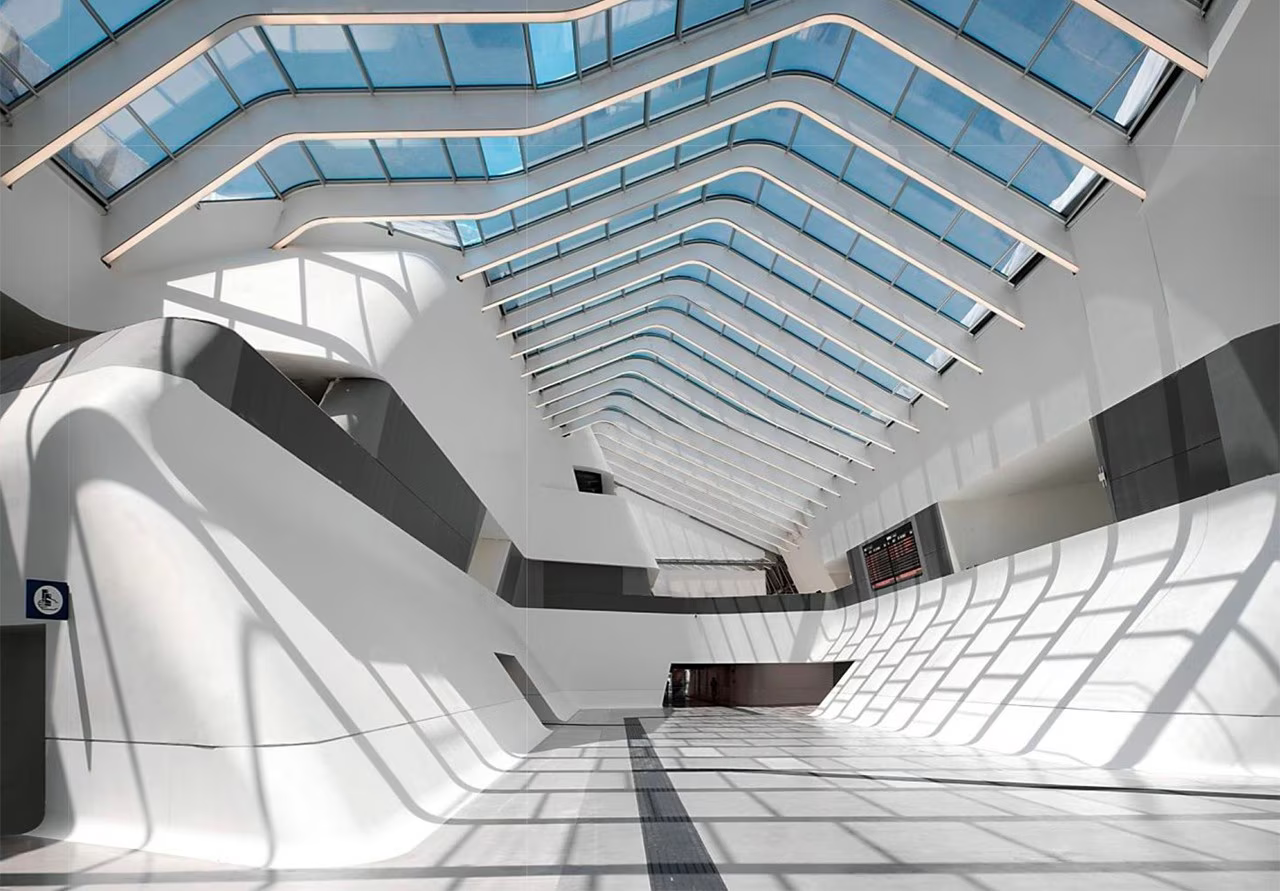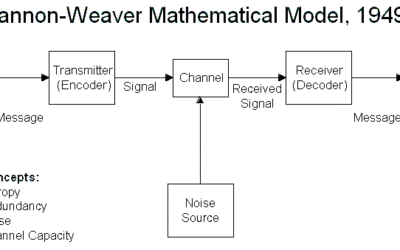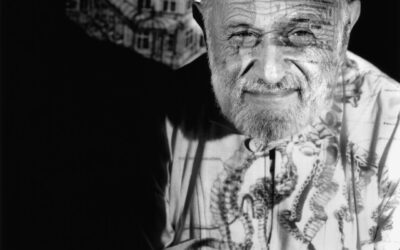The Psychology of Parametricism

What is Parametricism?
Parametricism, a design paradigm that emerged in the late 20th and early 21st centuries, represents a significant shift in architectural thinking and practice. This approach, which relies heavily on algorithmic design processes and computational power, has reshaped how architects conceptualize, design, and construct buildings.
Cultural, Technological, and Political Context
The rise of parametricism can be attributed to several key factors:
Technological advancements:
Rapid development in computer technology and software capabilities, particularly in 3D modeling and simulation, provided architects with powerful tools to explore complex geometries and relationships.
Complexity theory:
Growing interest in complexity theory and systems thinking across various disciplines influenced architects to consider buildings as part of larger, interconnected systems.
Big data:
The increasing prevalence of big data and the ability to process vast amounts of information allowed for more nuanced and data-driven design decisions.
Globalization:
The globalization of architectural practice and the demand for iconic, distinctive buildings in rapidly developing urban centers created a fertile ground for parametric design’s ability to generate unique, context-responsive forms.
Sustainability concerns:
Growing awareness of environmental issues pushed architects to seek more efficient, responsive design solutions.
Digital fabrication:
Advancements in digital fabrication techniques allowed for the realization of complex forms generated through parametric processes.
Philosophical shifts:
Post-structuralist philosophy and the concept of smooth space influenced the theoretical underpinnings of parametricism.
Innovations and Characteristics
Parametricism introduced several innovative approaches that revolutionized architectural design processes. At its core is parametric modeling, where design elements are defined by parameters and relationships rather than fixed dimensions, allowing for rapid iteration and exploration of design variants. This approach enables generative design techniques, using algorithms to explore thousands of design possibilities based on set criteria. Topological transformations became a hallmark of parametric architecture, creating fluid, continuous surfaces that blur traditional distinctions between walls, floors, and ceilings. Environmental performance optimization was integrated into the design process, with parametric tools allowing architects to analyze and respond to factors like solar gain, wind patterns, and energy efficiency in real-time. Script-based form generation, using custom scripts and visual programming, opened up new possibilities for creating complex forms and relationships. The concept of responsive architecture gained traction, integrating sensors and actuators to create buildings that can adapt to changing conditions. Perhaps most significantly, parametricism introduced a multi-scalar approach, applying parametric principles from the scale of material properties to urban planning, thus encompassing the entire spectrum of architectural and urban design.
Parametric modeling:
Design elements are defined by parameters and relationships rather than fixed dimensions, allowing for rapid iteration and exploration of design variants.
Generative design:
Use of algorithms to explore thousands of design possibilities based on set criteria.
Topological transformations:
Creation of fluid, continuous surfaces that blur traditional distinctions between walls, floors, and ceilings.
Environmental performance optimization:
Real-time analysis and response to factors like solar gain, wind patterns, and energy efficiency.
Script-based form generation:
Use of custom scripts and visual programming to generate complex forms and relationships.
Responsive architecture:
Integration of sensors and actuators to create buildings that can adapt to changing conditions.
Multi-scalar approach:
Application of parametric principles from the scale of material properties to urban planning.
Key Innovators
Patrik Schumacher: Theoretical champion of parametricism, having coined the term and extensively written about its principles.
Zaha Hadid: Pioneer in translating parametric thinking into built form, creating iconic buildings that epitomize the fluid, complex geometries associated with the style.
Greg Lynn: Early adopter of digital design tools and theorist of animate form, laying much of the groundwork for parametric thinking in architecture.
Michael Hansmeyer: Pushed the boundaries of computational architecture, creating incredibly complex forms that challenge traditional notions of architectural space and fabrication.
Neri Oxman: Work at the intersection of computational design, digital fabrication, and material science has expanded the possibilities of what parametric design can achieve.
Marc Fornes: Known for his research and development in “computational geometry” and large-scale, self-supported structures.
Benjamin Aranda and Chris Lasch: Explored algorithmic design processes and their material realizations.
Related Architectural Styles
Parametricism does not exist in isolation but is part of a broader ecosystem of contemporary architectural approaches that engage with digital technologies and systemic thinking. Digital Morphogenesis, which focuses on using digital tools to generate and evolve form, shares many principles with parametricism. Blobitecture, characterized by curved and rounded building shapes, can be seen as a precursor to some of the more fluid forms enabled by parametric design. Deconstructivism, with its fragmented geometric forms, influenced early parametric explorations. Sustainable Design has increasingly incorporated parametric tools for environmental analysis and optimization. Responsive Architecture, which aims to create buildings that adapt to environmental conditions and user needs, often relies on parametric systems. Biomimetic Architecture, drawing inspiration from natural forms and processes, frequently employs parametric modeling to translate biological principles into architectural solutions. Algorithmic Architecture, which uses computer algorithms to generate architectural form and solve design problems, is closely aligned with parametric approaches. These related styles and movements form a rich tapestry of contemporary architectural thought, with parametricism serving as a key thread connecting many of these diverse approaches.
Lasting Influence and Modern Context
Parametricism has had a lasting influence on contemporary architectural practice:
Design process: It has fundamentally changed how many architects approach the design process, shifting emphasis from fixed forms to malleable systems of relationships.
Architectural education: Parametric design tools and computational thinking have become integral parts of many curricula.
Iconic architecture: It has enabled the realization of increasingly complex and ambitious architectural projects, particularly in the realm of cultural institutions and corporate headquarters seeking iconic status.
Performance-driven design: There has been a shift towards using parametric tools more subtly, focusing on performance optimization and responsive design rather than purely formal exploration.
Urban design: Parametric approaches have been applied to urban planning, allowing for more dynamic and adaptive urban strategies.
Interdisciplinary collaboration: The complexity of parametric design has fostered increased collaboration between architects, engineers, and computer scientists.
Material innovation: Parametric thinking has influenced material science, leading to the development of new materials with programmable properties.
Criticisms
Despite its innovations, parametricism has faced criticism on several fronts:
Formalism: Some argue that its focus on complex geometries and technological processes has led to an overemphasis on form at the expense of function and human experience.
Environmental impact: Critics point out that the complex forms often require energy-intensive manufacturing and construction processes.
Accessibility: The reliance on advanced software and fabrication techniques has raised questions about the accessibility and democratization of architectural practice.
Philosophical debates: There are ongoing discussions about the role of the architect in a parametric design process, with some arguing that it diminishes creative agency in favor of algorithmic processes.
Social responsibility: Critics argue that parametricism’s focus on formal complexity often overlooks social and cultural contexts.
Cost: The complex forms and advanced technologies associated with parametric design can lead to increased construction costs.
Maintenance challenges: The unique forms and systems created through parametric design can pose challenges for long-term maintenance and adaptability.
Ego Perspective: Assertions and Insecurities
Parametricism asserts a technologically advanced and scientifically informed approach to architecture. It projects an image of architecture as a cutting-edge discipline capable of harnessing complex computational processes to address contemporary challenges.
However, this also reveals certain insecurities within the profession:
Fear of irrelevance in an increasingly digital world Anxieties about the changing role of the architect in the face of advancing artificial intelligence and automation Concerns about the loss of traditional architectural skills and knowledge Insecurity about the ability to justify design decisions that are increasingly driven by algorithms Fear of architecture becoming too abstract or detached from human experience
Jungian Depth Psychology Analysis
From a Jungian perspective, parametricism can be interpreted as an expression of several archetypes:
The Magician: Evident in the movement’s use of complex algorithms to transform abstract data into tangible form. The Explorer: Manifests in the continuous push to discover new forms and spatial relationships. The Scientist: Present in the emphasis on data-driven design and optimization. The Creator: Expressed in the generation of novel, complex forms. The Transformer: Seen in the ability to morph and adapt designs based on changing parameters.
These archetypal energies coalesce in parametricism’s attempt to create an architecture that is both rationally optimized and expressively dynamic, reflecting a collective desire to reconcile scientific precision with creative expression in the digital age.
Parametricism represents a significant paradigm shift in architecture, embodying both the possibilities and challenges of designing in the digital age. While it has pushed the boundaries of what’s possible in architectural form and performance, it also raises important questions about the future of the profession and its relationship to technology, society, and the environment.
Bibliography: Parametricism in Architecture
Carpo, M. (2013). The Digital Turn in Architecture 1992-2012. Chichester: Wiley.
Davis, D. (2013). “Modelled on Software Engineering: Flexible Parametric Models in the Practice of Architecture.” PhD dissertation, RMIT University.
Hensel, M., Menges, A., & Weinstock, M. (2010). Emergent Technologies and Design: Towards a Biological Paradigm for Architecture. New York: Routledge.
Jabi, W. (2013). Parametric Design for Architecture. London: Laurence King Publishing.
Kolarevic, B. (2003). Architecture in the Digital Age: Design and Manufacturing. New York: Spon Press.
Lynn, G. (1999). Animate Form. New York: Princeton Architectural Press.
Oxman, R., & Oxman, R. (Eds.). (2014). Theories of the Digital in Architecture. London: Routledge.
Picon, A. (2010). Digital Culture in Architecture: An Introduction for the Design Professions. Basel: Birkhäuser.
Schumacher, P. (2008). “Parametricism as Style – Parametricist Manifesto.” 11th Architecture Biennale, Venice.
Schumacher, P. (2012). The Autopoiesis of Architecture, Volume II: A New Agenda for Architecture. Chichester: Wiley.
Terzidis, K. (2006). Algorithmic Architecture. Oxford: Architectural Press.
Tedeschi, A. (2014). AAD Algorithms-Aided Design: Parametric Strategies Using Grasshopper. Brienza: Le Penseur Publisher.
Woodbury, R. (2010). Elements of Parametric Design. London: Routledge.
Read about the Psychology of Other Styles of Architecture
The Psychology of Architecture
The Psychology of Architecture

























0 Comments